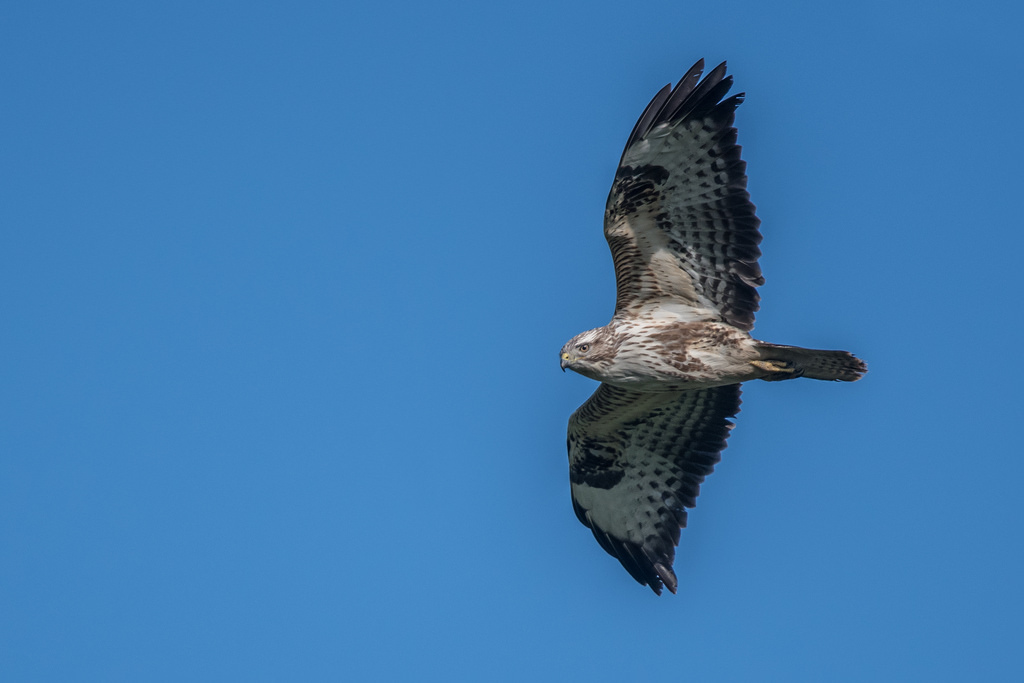
Tim writes: I think this is the first time I have managed to capture the eye detail in a Buzzard, which is especially good as he’s looking right down at me. Their plumage is variable and this is quite a pale individual, and identifiable as an adult by the thick, dark trailing edge to the wing. In fact it is so pale it has a superficial resemblance to Rough-legged Buzzard, but it is definitely just a Common Buzzard. Buzzards have now overtaken both Sparrowhawk and Kestrel to become Britain’s most numerous bird of prey. There are now an estimated 67,000 breeding pairs whereas Sparrowhawk and Kestrel only have 33,000 and 45,000 respectively. When I moved to Yorkshire in the 1980s there were no Buzzards anywhere near me in the South Pennines. I had to go west to Wales or the Lake District to guarantee seeing a Buzzard but today they occur almost everywhere. The spread coincided with the Government’s more robust attitude to pesticide abuse, which had previously been keeping the population suppressed. I photographed this one in the Peak District in South Yorkshire on 22 April 2018.
[registration_form]
Great picture Tim, wish mine were as good , must keep trying. However the bird is not an adult, signs of a young bird are pale eye, body plumage is made up of streaks not bars and the tail has no broader darker subterminal band. The hind edge of the flight feathers is not as dark or broad as I would expect in an adult. Feel free to disagree.
Thanks Paul. I’ll go along with this being a young bird. I focused on the broad trailing edge but you are right with all the other features. Definitely a young bird.
When was this? I must have missed the day they held that, was it a Wednesday?
The all too frequent incidents of illegally poisoned wildlife, reported by the media, make it hard for
Some to believe that the deliberate use of these substances, is far less widespread than formerly.
The introduction of the Larsen trap, undoubtedly did much to improve matters in this respect.
In the central Peak District, I found my first local Buzzards nest in 1995, although they had bred on the
neighbouring estate for a few years previously.
The population on both preserved estates must now number around thirty pairs, along with increasing
numbers of Goshawk, this could not have happened with the old mentality.
I have returned from a wood this morning, having found the second of the two gos nests it usually
contains. One of these has a Buzzard less than 100mtrs away, a frequent occurrence, indeed I have seen another less than 70 mtrs away.
In woods several kilometres in extent, you wonder why ?.